A Deeper Look into the Many Mesmerizing Sets of Netflix’s ‘Squid Game’
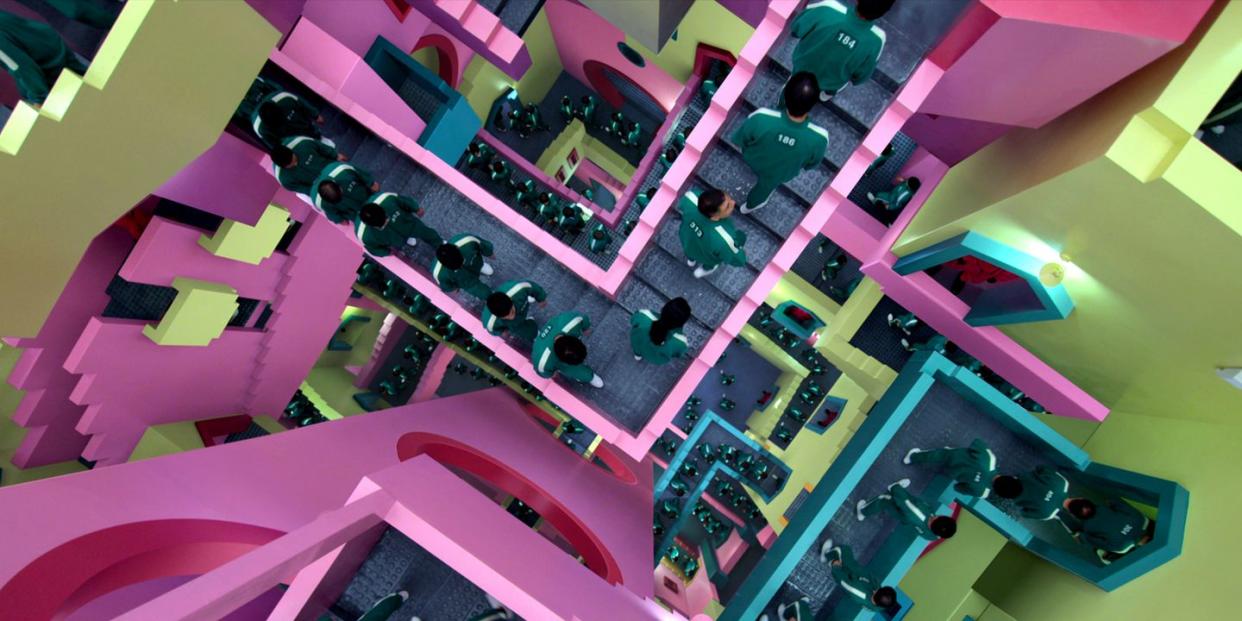
- Oops!Something went wrong.Please try again later.
*Spoilers ahead*
If you’ve just finished bingeing Squid Game on Netflix and you are eager to learn more about the show, you’ve come to the right place. While the popularity of the new dystopian thriller has been immediate (the show is officially the most watched show on Netflix to date with over 100 million views in less than a month), it actually took writer and director Hwang Dong-hyuk 10 years to get the show (originally written as a film) off the ground.
The South Korean series is about a group of 456 debt-laden adults who are all invited to participate in a series of six children’s games (think red light, green light and marbles) for the chance to win a cash prize of 45.6 billion South Korean wons ($38 million USD). Sounds simple, but there’s a sinister twist, of course: Every loser dies.
Each scene, naturally, gives the viewer an intense sense of anxiety, a feeling made all the more unsettling given each deadly game’s surreal, childlike backdrop. Even the IRL star of the show, Lee Jung-jae, confesses that he and the cast were busy snapping photos of the fantastical, “almost dreamlike” set during the first day of filming.
As design enthusiasts, we were, of course, curious to learn more. Thankfully, Netflix released a behind-the-scenes featurette detailing some of the visual choices made by Hwang and art director Chae Kyung-sun. As Chae explains, “We created the places and displays trying to make the viewers think about the hidden intentions of Squid Game with us.”
Keep reading for more behind-the-scenes details behind each game’s set.
Red Light, Green Light
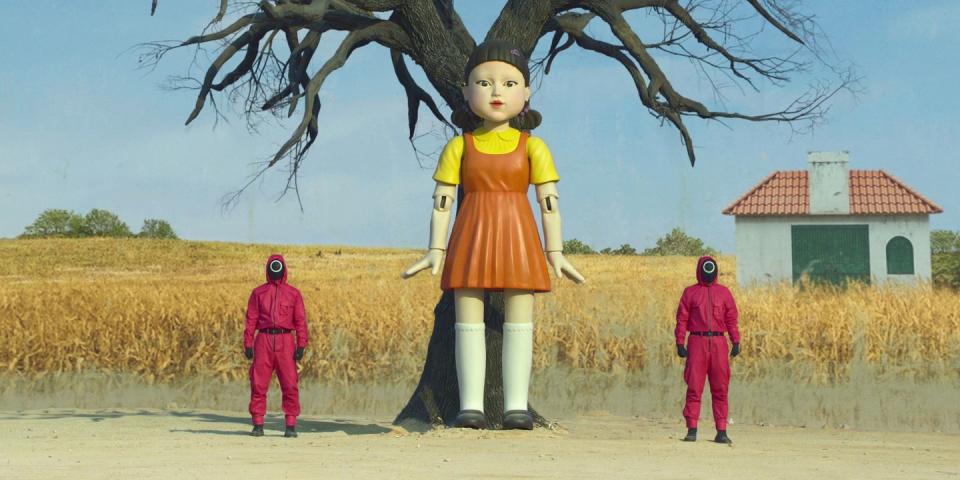
The first game to start off the competition was chosen because of its inherent simplicity, according to Hwang: “Red light, green light is a kind of game that can be played by a lot of people at the same time. It’s also one of the most simple games.” In this case, a blue screen was built around the entire set to depict a large cornfield. The real showstopper, though, is the large-scale working robot, inspired by children’s textbook illustrations.
Honeycombs and Tug of War
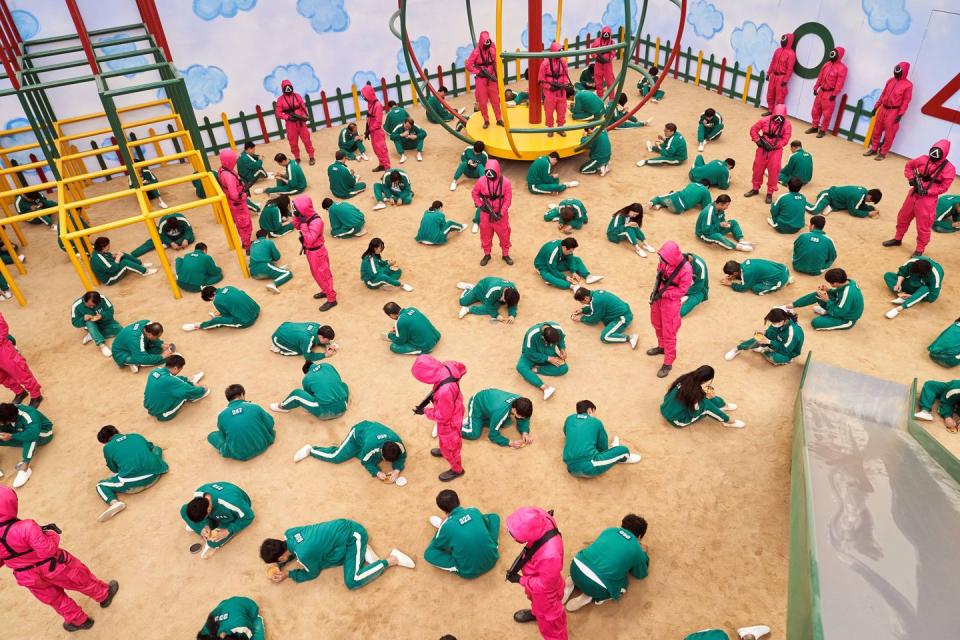
The second game, honeycombs, probably requires the most concentration and focus from Squid Game participants, who have to carefully carve out either a circle, triangle, star, or umbrella with only a needle from a disc of sweet honeycomb candy. The challenge takes place on a “playground” featuring a slide, jungle gym, swings, and monkey bars. But of course, there is a frightening aspect: Each item of playground equipment is oversize to give the adult players a sense of the uncanny.
The third game, tug of war, features the same warped sense of scale. “I tried to simulate the atmosphere of real playgrounds,” Hwang explains. He felt it was important for the actors to feel as if they were really playing the game in order for them to adequately convey the life-or-death stakes. But safety first, of course: While the skinny platforms appear to hover over a dizzying black abyss, the actors were placed on ones that floated just above the ground.
Marbles
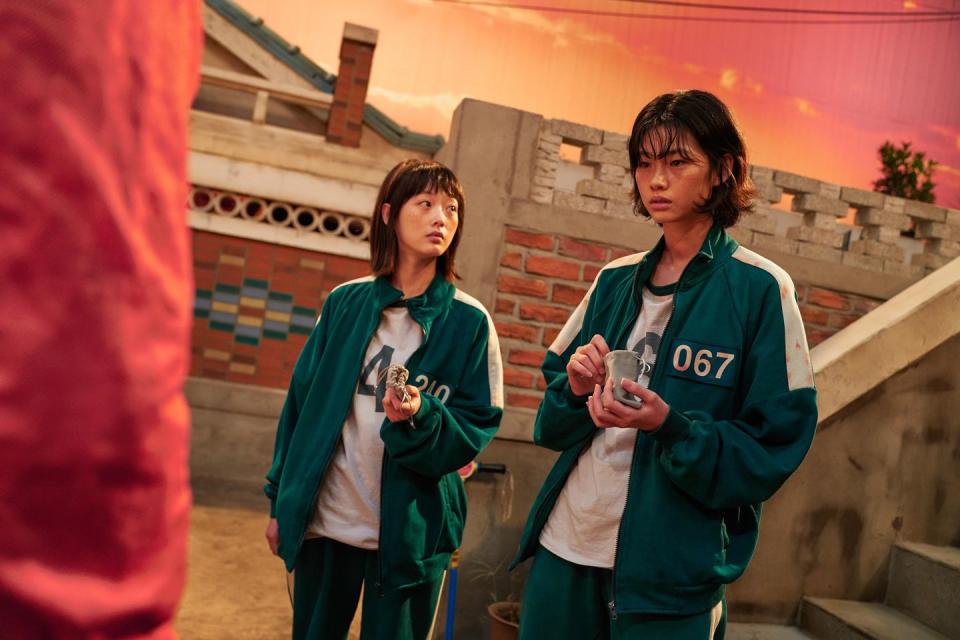
The most devastating game to watch is the fourth game, marbles, in which the players split up into pairs of their choosing and are given 10 marbles each. Whoever ends up with all 20 marbles lives to see another game.
This set—the most realistic—was influenced by typical South Korean homes and alleyways from the 1970s and ’80s, which created a sense of nostalgia for the characters.
An orange glow of a sunset indicates that time is of the essence here before the games—and the characters—expire. Interestingly, achieving that glow was one of the most challenging visual feats to achieve, according to Chae. “We put the most effort into that set. It also took the most time,” she says. “Our main concern was how to display the sunset. We thought it should also be a set on the border of fake and real.”
Glass Stepping Stones
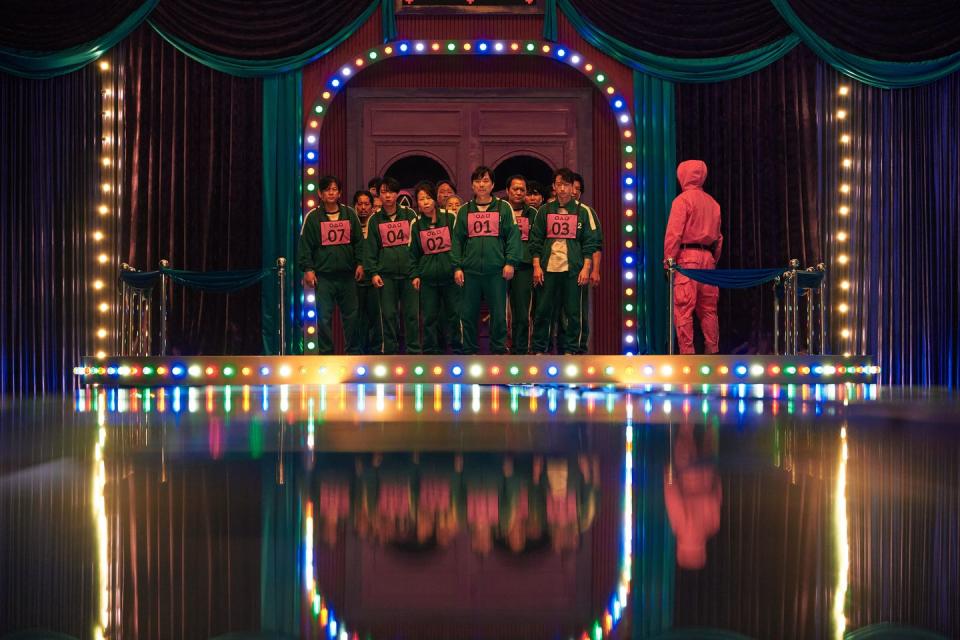
The penultimate round is glass stepping stones. In this episode, the players have to figure out a way across a forebodingly high overpass while using only their judgment on deciding which “stone” is delicate glass (which would shatter if you jumped onto it) or plexiglass.
This scene is set to imitate an old-school theater. For example, the players, or the performers in this case, walk out from behind velvet curtains with the addition of colorful string lights that convey an almost circuslike atmosphere. The lighting played a key role in this challenge due to the reflection it creates on the glass, as pointed out by one of the characters in the episode. This stagelike theme also makes sense, as this is the first game in which participants are being watched live and in-person by the “VIPs”—the elite (and anonymous) class of citizens behind the entire twisted competition.
Fun fact: The terror that you see in the characters’ faces wasn’t an act, as real glass and plexiglass were set up nearly five feet off the ground. “I think we could express the unnoticed rigidity and fear of the body,” Hwang says of the emotion on set. “It felt like really jumping off a high bridge. The game was real, and they felt real fear.”
Squid Game
Finally, the show’s namesake: squid game. It takes place in an empty stadium with the outlines of a triangle, square, and small circles (the shapes that make up the game’s logo). This set is the simplest, so as to not draw the viewer’s attention away from the two final players and their personal quarrels with each other. “The first and last games are played in the same spot,” Chae points out. “We wanted the place itself to tell a story, questioning who will be the last one.”
“That’s the story of Squid Game we intended,” Hwang adds. “It seems that all that’s left for the participants is despair, fear, and sadness. But much like the outside world they were living in, they don’t lose humanity or hope for that humanity. So this story is like Pandora’s Box.”
You Might Also Like

